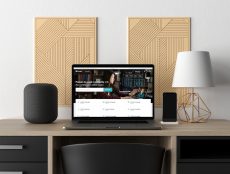
Augmented reality has been in existence for several years now, but to date, it remains only partially understood by the general public. By definition, augmented reality makes the line between what is real and what is computer-generated fuzzy by enhancing what one sees, hears, feels and smells. While sharing much in common with virtual reality or VR, augmented reality is ultimately closer to the real world. In short, it is a way for learning environments to adapt to the needs and responses of learners. With augmented reality or AR, it is as if the learning context itself becomes another active player in the learning process. On this basis, augmented reality transforms eLearning and moving forward, there are high hopes that it will have a major impact on K-12 education, higher education and workplace training.
How and Where Augmented Reality Works
Augmented reality uses a range of now familiar technologies from touch screens to voice recognition to create an additional layer of information or experience on one’s reality. In short, it superimposes digital content on real contexts. The applications are far reaching and include K-12 curricular innovations but also are expected to soon transform entertainment, retail and travel on myriad levels. There is also signs that some big players in the tech industry are moving away from virtual reality to augmented reality.
Tim Cook, from Apple, recently said,”Virtual reality sort of encloses and immerses the person into an experience that can be really cool, but probably has a lower commercial interest over time.” What Cook is notably picking up on is that while virtual reality is a closed experience (likely to find its biggest applications in entertainment), augmented reality is in the world and likely to especially take hold in educational and workplace settings.
Augmented Reality Transforms eLearning in Schools
Usually, when we think about computers and eLearning, we think about screen time and this may bring to mind a bunch of couch potatoes. With augmented reality, eLearning can be incredibly active too. A 2014 article in WIRED Magazine, emphasized,”AR adventures that layer mysteries, stories, and puzzle-solving over unpredictable environments – a.k.a. their backyards. Simply embracing mobility and spatial interactions can get kids up and moving.” Examples of active AR include Ingress from Nantic Labs; the game offers players a chance to exploresci-fi stories and entails actual travel and even a Pokemon element. However, augmented reality transforms eLearning on some surprisingly levels too.
“It may sound crazy, but I’m actually exploring how to use AR in my physical education classes,” says Calvin Clark. Clark is currently completing his bachelor of education and hopes to soon find full-time work as a middle school physical education teacher. He explains, “I did an undergraduate degree in computer science, but I’m a jock at hear and really wanted to work with kids. There’s a lot of affordable AR applications on the market now, so I’m thinking about how to use these to get a bunch of 12 year old kids outside and running 3 to 5 miles during one class. I’ve already had some really successful experiments with AR in this context, and I think it has huge potential.”
Augmented Reality Transforms eLearning on the Job
Beyond creating new opportunities for K-12 education, the higher education and training sectors are seriously looking to AR to offer ongoing and engaging training. With AR, someone’s field of vision is essentially transformed. In this new and expanded field, one can learn in context. A new customer service representative, for example, can learn as they are walking through their store. A new server in a restaurant can access critical information as they are walking from table to table. A construction worker can have alerts about safety issues appear as they walk through a dangerous construction site or while they operate a piece of potentially dangerous equipment. In short, augmented reality eliminates the once long and often perilous gap between acquiring knowledge and putting it into action, because now training and work can happen simultaneously.
As Tim Cook recently told BuzzFeed, “Augmented reality will take some time to get right, but I do think that it’s profound.” How profound, of course, will only be seen over the next few years as more schools and workplaces begin to fully exploit the potential of augmented reality.









No Comments